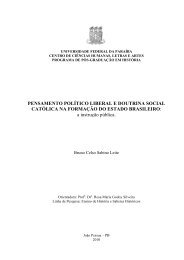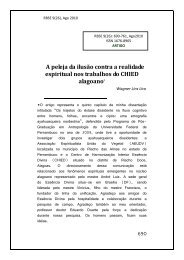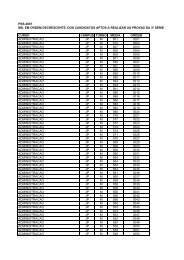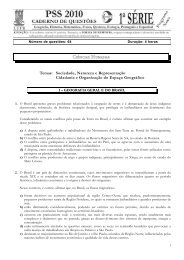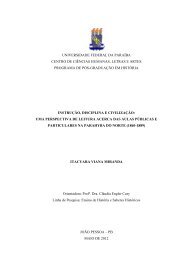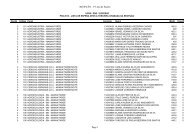abril de 2004 - CCHLA - Universidade Federal da ParaÃba
abril de 2004 - CCHLA - Universidade Federal da ParaÃba
abril de 2004 - CCHLA - Universidade Federal da ParaÃba
Create successful ePaper yourself
Turn your PDF publications into a flip-book with our unique Google optimized e-Paper software.
Generated by Foxit PDF Creator © Foxit Softwarehttp://www.foxitsoftware.com For evaluation only.The implication that the vernacular meaning of selfesteemhas a pri<strong>de</strong>/shame component is supported by anempirical study of the relationship between self-esteemscores and affect. Using two self-esteem scales and ascale measuring positive and negative affect, Brown andMarshall (2001) found that pri<strong>de</strong> and shame were the twoemotions having the highest correlations with self-esteemscores.But <strong>de</strong>finition # 2 of self-esteem, above, points toanother component: it mentions no emotions or feelings.Instead, it <strong>de</strong>fines self-esteem cognitively, holding a goodopinion of self. Self-esteem scales appear to emphasizethis second meaning. Self-esteem scales and studies focuson that part of self-concept, self-evaluation, which isverbally <strong>de</strong>scribed and cognitive, rather than affective andsocial. With a stan<strong>da</strong>rdized paper and pencil test, it wouldbe difficult to get at the affective component directly.Although there are two hundred scales that <strong>de</strong>fineself-esteem operationally, I have been unable to find asingle conceptual <strong>de</strong>finition. But the confound betweenself-evaluation and self-feeling discussed here has comeup indirectly. Baumeister et al (1996) have suggested thata too high self-esteem, which they equate with mereegotism, can lead to aggression when egotism isthreatened. But if self-feeling is <strong>de</strong>fined as the principlecomponent of high self-esteem, genuine pri<strong>de</strong>, theBaumeister paradox wouldn’t arise.Their discussion ignores the distinctions betweengenuine pri<strong>de</strong> and false pri<strong>de</strong> (egotism), and betweenconscious shame and shame that is outsi<strong>de</strong> awareness.Self-esteem might be <strong>de</strong>fined conceptually as a ratiobased on proneness to genuine pri<strong>de</strong> as against pronenessto shame/embarrassment, every<strong>da</strong>y emotions that areprevalent in virtually all kinds of encounters and manystates of consciousness. Since positive self-evaluationmay be based on egotism and false pri<strong>de</strong>, scales confoun<strong>de</strong>gotism, high cognitive self-evaluation, with high-selfesteem (justified pri<strong>de</strong>).The effect of a mo<strong>de</strong>l of self-esteem that has bothcognitive and feeling components can be represented in asimple table.Self Feeling123



